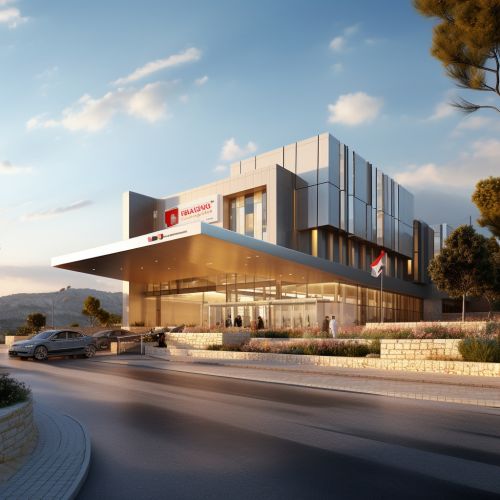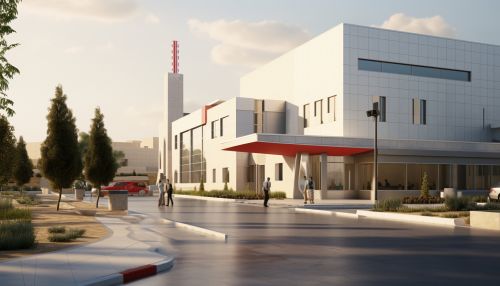Healthcare in the Palestinian territories
Overview
Healthcare in the Palestinian territories is a complex and multifaceted issue, shaped by a variety of socio-political and economic factors. The healthcare system encompasses a range of services provided by the Palestinian Ministry of Health, non-governmental organizations (NGOs), and private providers. The system is characterized by a mix of public and private financing, with a significant portion of funding coming from international donors.
History
The history of healthcare in the Palestinian territories is closely tied to the region's political history. During the British Mandate period (1920-1948), healthcare services were limited and primarily focused on controlling infectious diseases. With the establishment of the State of Israel in 1948 and the subsequent displacement of Palestinians, the healthcare system was severely disrupted.
In the following decades, healthcare services were primarily provided by UNRWA (the United Nations Relief and Works Agency for Palestine Refugees in the Near East) and various NGOs. It was not until the establishment of the Palestinian Authority in 1994, following the Oslo Accords, that a formal healthcare system began to take shape.
Structure and Organization
The Palestinian healthcare system is divided into three main sectors: public, private, and NGO. The public sector, managed by the Palestinian Ministry of Health, is the largest provider of healthcare services. It operates a network of primary healthcare clinics and hospitals across the West Bank and Gaza Strip.
The private sector includes a variety of providers, from individual practitioners to private hospitals. These providers often offer specialized services not available in the public sector, but their services are typically more expensive and less accessible to the general population.
The NGO sector plays a crucial role in providing healthcare services, particularly in areas with limited access to public healthcare. Many NGOs operate clinics and hospitals, providing services ranging from primary care to specialized treatments.
Financing
Financing for healthcare in the Palestinian territories comes from a mix of public and private sources. The Palestinian Authority allocates a portion of its budget to healthcare, but this funding is often insufficient to meet the system's needs. As a result, a significant portion of healthcare funding comes from international donors.
Private financing comes from out-of-pocket payments by patients, as well as private insurance. However, the high cost of private healthcare and the limited coverage of insurance plans mean that many Palestinians face significant financial barriers to accessing healthcare.
Challenges
There are numerous challenges facing the healthcare system in the Palestinian territories. These include a lack of funding, inadequate infrastructure, and shortages of medical supplies and personnel. The ongoing Israeli-Palestinian conflict has also had a significant impact on the healthcare system, disrupting services and limiting access to care.
In addition, the fragmentation of the healthcare system - with services provided by a mix of public, private, and NGO providers - can lead to inefficiencies and gaps in care. There is also a lack of comprehensive health information systems, making it difficult to monitor and improve the quality of care.
Future Directions
Despite these challenges, there are also opportunities for improving healthcare in the Palestinian territories. Efforts are underway to strengthen the healthcare system, including initiatives to improve healthcare financing, enhance the quality of care, and expand access to services. There is also a growing recognition of the importance of addressing social determinants of health, such as poverty and education, in order to improve health outcomes.


